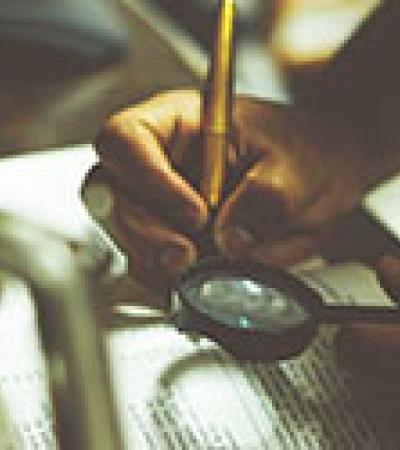Between the two of us we have over 45 years of teaching experience. (Yes, we are stunned by that, too!) From the beginning, our library programming has taught students to responsibly and critically select and evaluate their resources. It’s the very foundation of media and information literacy and a critical skill for students to master in their K-12 education.
To quote Bob Dylan, "the times, they are a changin'." As librarians, we continue to teach and reinforce that merely finding resources that are “good enough” is not what students should be striving for. Instead of taking the easy way out and doing a quick internet search for information, and taking the easy answer, students should be digging deeper and finding the best answer. Students should be finding multiple sources and making decisions and evaluating the accuracy of their answers.

An information explosion
The evaluative questions/criteria we have taught our students to consider have not changed — authority, accuracy, objectivity, currency ... . Yet, there has been an evolution to the information found and an evolution of the literacies needed to interact with that information.
Remember when as the librarian you could hold up a popular news magazine and a supermarket tabloid as an extreme example on the importance of validity, accuracy and the quality of a resource? From that point in time to today, the sources of information available to students to sift through has exploded exponentially. The examples of misinformation are no longer as glaringly evident as the supermarket tabloid.
When did a popular news magazine stop being the resource we were happy students were using instead of just “some website"?
Last year, we wrote a blog post on news literacy and talked about how in days past gatekeepers were the guardians of what news was consumed. The gatekeepers were the newspapers: daily and weekly, the evening news and just a handful of channels. Today, anyone can be a citizen reporter, the news cycle moves incredibly quickly, and students and adults alike get their news from Twitter, Instagram, Snapchat and Facebook.
Objectivity and bias (including our own)
One of the criteria we used (and still use) when teaching students selection and evaluation is objectivity/bias. We teach students to evaluate a source for bias. In years past, evaluating for bias was a matter of knowing which news channels leaned right or left or which newspaper was more conservative.
As we prepare information literate citizens, librarians are asking students to recognize left- and right-leaning bias, but to also be aware of their own bias. Students need to be able define and recognize implicit and confirmation bias. The New York Times has a great series of videos that can be used at the high school level on recognizing implicit and confirmation bias.
Easy vs. accurate
It has been 10 years since Dan Brown published his book "The Lost Symbol." A favorite quote from that book is “Google is not a synonym for research.”
As part of our information literacy instruction, librarians are helping students to realize that Google has sometimes lulled them into the mistaken belief that searching for information is easy. All you need to do is type a few search terms into a browser to receive results. But the question remains, is it accurate information and is it the right information needed for the task? Is the information confirming our bias or our implicit bias? Our goal as information specialists is to instill in our students (and often staff) the mindset that searching for information is not always quick and easy — it is strategic and evaluative.
Gone are the days of showing students websites such as The Pacific Northwest Tree Octopus and Dog Island. The digital landscape has become very complex. The ability to manipulate images and video in a manner that is virtually undetectable find us introducing new concepts such as deepfake.
Students need to be critical thinkers. Teaching information literacy means teaching students and patrons to locate and evaluate and to constantly fact check. Once armed with these skills, students will be able to make informed decisions about the content they are viewing and wade through the disinformation campaigns like a pro! We are teaching our students to ask the good questions and check their bias(es) at the door.
Resources
Below are additional resources to help support information literacy- advocacy and teaching:
- AllSlides for Schools - provides tools and resources to help educators teach news media literacy
- Common Sense Education on Information Literacy
- Common Sense Education Information Literacy Lessons
- FactBar - Finnish fact-checking toolkit for voter literacy
- News Literacy: The Keys to Combating Fake News by Michelle Luhtala and Jacquelyn Whiting



